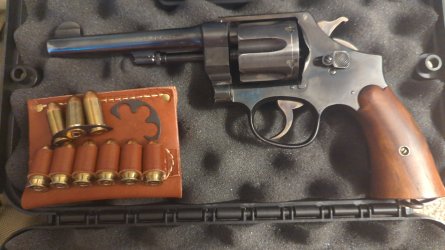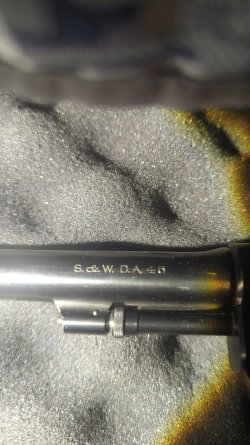Steeldog65
Alpha
I'll try this again, I have a 1917 Smith & Wesson .45 caliber that was down necked .455 during WW1. It uses half moon clips to fire the semi-auto .45 bullets. It has never been fired as far as I can tell still has the original US Marshals leather holster and after an inquiry Smith & Wesson, there is no history after arrival in 1918 at the Illinois State armory. I got it in 2000 helping clean up a bank that was closing and it was in a cardboard box wrapped up in paper.




